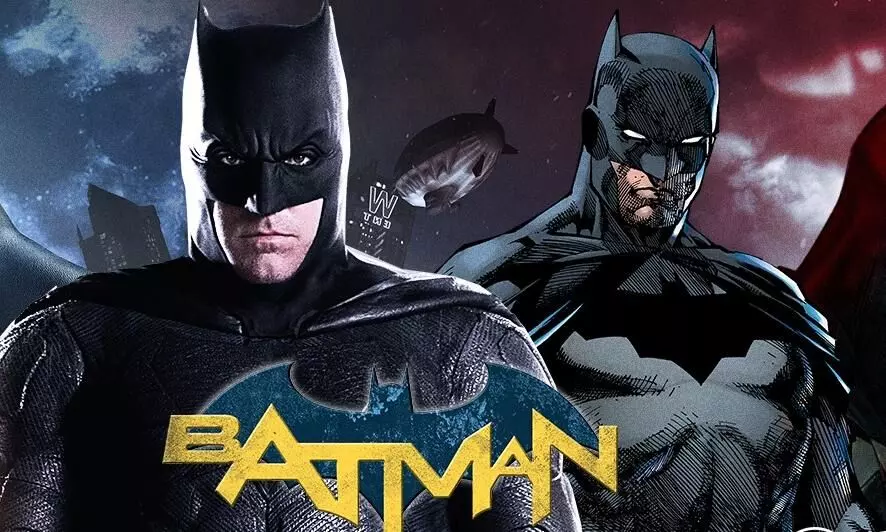
Photo: Meta
With The Batman, the DC Comic character is re-invented within the parameters of a superhero movie, writes KALPAJYOTI BHUYAN.
The comparisons are inevitable in the sense that the makers have themselves compared The Batman with Christopher Nolan's The Dark Knight. Also, Nolan delivered one of the best portrayals of the caped crusader, setting a bar so high that it's nearly hard to surpass. But to be fair, Matt Reeves' The Batman stands on its own ground and, therefore, deserves its own chance.
The Dark Knight Trilogy cinematographer Wally Pfister made Gotham look as real as possible while complimenting Nolan's thematically dark vision, but Reeves, with his artistically darker version, takes Batman's gloom and doom to a whole new level. Aesthetically, The Batman is more close to Zach Snyder's version of the Batman, only Reeves does not confuse darkness for deepness. Snyder had some style but his movie lacked substance, and as a result, he failed to well establish the bat, only to serve its purpose for the hurriedly assembled heroic saga of Justice League. The Batman, on the other hand, takes its time to develop its mood and characters.
If we follow the chronological timeline of The Dark Knight Trilogy, then the events of The Batman would roughly fall somewhere between Batman Begins and The Dark Knight. So, in between Batman's origin story, which it deftly abandons, sparing the audiences the ordeal of having to witness the same back-story, and his face off with the Joker, Reeves' throws us right into the prevailing crime-laced scenario of Gotham.
Batman's chances of cleaning the streets of his city are bleak, as one man cannot be present in all of the crime scenes occurring at the same time. But, as crime finds its own path, Batman too becomes a symbol of terror, a darkness ready to devour everything that comes before it. In the midst of this gloom, a series of political assassinations sends a fear signal to Gotham's most respected and powerful lot. The killer identifies himself with riddles and proposes to expose Gotham's darkest secrets at the expense of further claim to lives. Now Batman must investigate these murders and stitch them together, deciphering clues and predicting the killer's next move, as well as any possible ties to his family.
Reeves' The Batman follows the detective nerve of Batman. The character's heroics are toned down to the point that it becomes a superhero film without the superhero. It's a Batman film only to the extent that its crime thriller setting allows it to be. In regards to its artistic essence, The Batman is more comparable to the gothic aspirations of Tim Burton's Batman and somewhat Nolan's Batman Begins. But, in its attitude and approach to the narrative, it finds itself in the earmarked territory of David Fincher. Its noir roots are on point and there are strong resemblances to movies like Se7en, Zodiac and Fight Club scattered all throughout the film. Its themes of crime and punishment, sin and retribution, and elements of suspense, along the serial killer premise and the homicidal turns it takes, everything goes by the Fincher tradition.
The Batman plays a note or two as a mob drama, very much like The Dark Knight, where Carmine Falcone and Salvatore Maroni and their organised crime nexus are important points of references in the story. And as the Riddler announces his next challenge, the daily news runs a self-shot home video of him abusing one of his new targets. In a similar home video broadcast on prime time news, Heath Ledger's Joker challenges Batman to take off his mask and go public, as it was seen in The Dark Knight. An anguished Wayne approaching the devil in Carmine throws in a fond remembrance of "You're taller than you look in the tabloids, Mr Wayne" of Batman Begins.
In this film, Batman is stripped down to the bare essentials. We don't get the iconic shot of Batman perched atop a clock tower, observing the streets of Gotham. But still we can feel the pressure and the power underneath the mask. The movie underscores with its characters. Robert Pattinson as Batman is broody and moody but then he is no different as his alter ego Bruce Wayne, who is supposed to sport the eccentric philanthropist playboy attitude. Selina Kyle is supposed to be selfish, self-centered and as cunning as a fox, as she employs her manipulative skills to accomplish her goals. But here, Zoë Kravitz's Selina Kyle is mostly emotional and vulnerable and Penguin was an unnecessary addition that doesn't serve much. His unworthiness to the plot is even reflected when Batman and Gordon leave him behind after rounding him up in a scene. Even Alfred Pennyworth didn't have much contribution. That's correct. It's everything Batman without exclusively being Batman.
